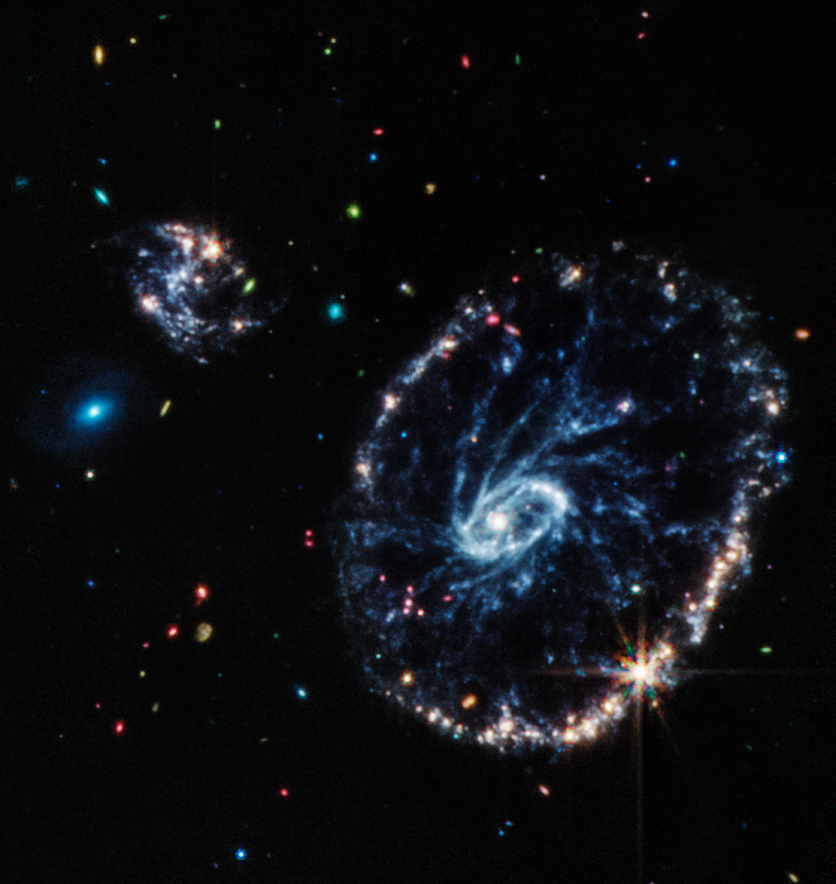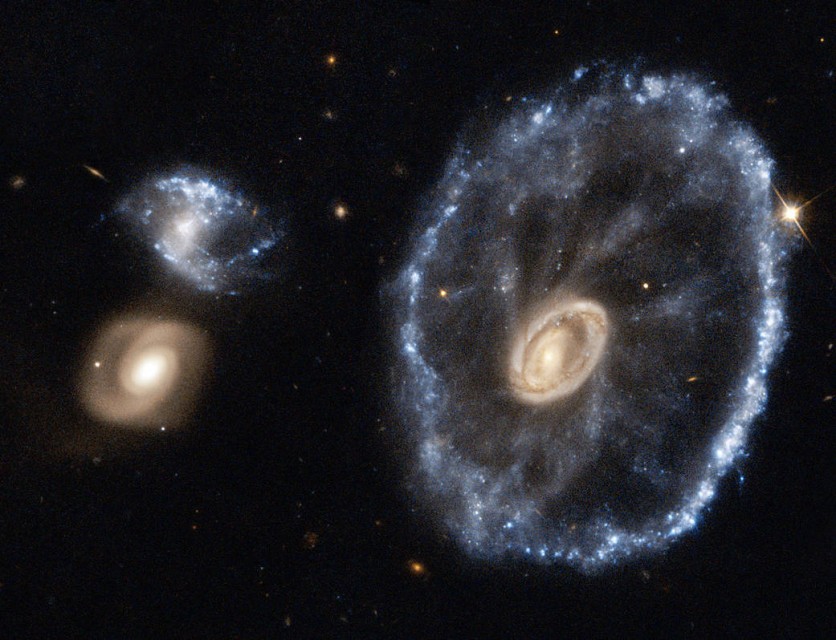Somewhere deep in space, a galaxy is tangled in all sorts of stellar gymnastics - bursting with so much chaos, enchantingly swirling, and cartwheeling its way to a collision with two smaller galaxies.
Luckily for us, we get to witness this narrative in full vision after NASA's James Webb Space Telescope (JWST) captured a massive pink speckled galaxy on the verge of a high-speed collision with two galaxies while the dark backdrop of the cosmos bears witness to such an enchanting event.

The Turmoil of The Cartwheel Galaxy
By peering into the turmoil of the Cartwheel Galaxy, JWST has discovered new information on star formation and the galaxy's main black hole.
Set against the background of numerous galaxies, Webb's strong infrared sight captured this crisply detailed image of the Cartwheel and two smaller companion galaxies.
According to NASA, this image offers a fresh perspective on the evolution of the Cartwheel Galaxy over billions of years.

It is worth noting that capturing the Cartwheel Galaxy is a rare opportunity, after all, it hails 500 million light-years away in the Sculptor constellation, as noted by NASA.
This dramatic event highlights a high-speed collision between a big spiral galaxy and a smaller galaxy that is not visible in this image.
The galaxy's structure and shape were most significantly impacted by the collision. The Cartwheel Galaxy has two rings: an eye-catching inner ring and a vibrant outer ring. Like ripples in a pond, after a stone is thrown into it, these two rings spread out from the collision's core.
This object is what astronomers refer to as a "ring galaxy," a type of structure that is less frequent than spiral galaxies like the Milky Way.
NASA said that huge young star clusters are seen in the brightest regions of the core, which also includes an enormous amount of hot material. On the other side, star formation and supernovae predominate in the outer ring, which has been growing for nearly 440 million years.
Read Also: NASA's James Webb Space Telescope Captures a 'Dramatic Stellar Death' In Deep Space Video
Wrapped In Mystery
The Hubble Space Telescope and other telescopes have previously studied the Cartwheel. Due to the amount of dust obscuring the view, this enchanting galaxy has been wrapped in mystery.
Now that Webb can detect infrared light, NASA claimed that they can better understand the nature of the Cartwheel than ever.

The Near-Infrared Camera (NIRCam), the main imager on Webb, scans the sky between 0.6 and 5 microns in the near-infrared, picking up essential light wavelengths that can show even more stars than those seen in the visible spectrum.
This is due to the fact that when newborn stars are examined in infrared light, they are less obscured by dust, which means that many young stars are currently forming in the outer ring, according to NASA.
NASA said that Webb's observations confirm that the Cartwheel is going through a very fleeting phase. The galaxy, which before the collision was only a typical spiral galaxy like the Milky Way, will probably continue to evolve.
While Webb provides a glimpse of the Cartwheel's present situation, it also sheds light on the galaxy's historical events and potential future developments.
Related Article : NASA's James Webb Telescope Is Capturing A 'Treasure Trove of Record-Breaking Distant Galaxies'
This article is owned by Tech Times
Written by Joaquin Victor Tacla
ⓒ 2025 TECHTIMES.com All rights reserved. Do not reproduce without permission.




